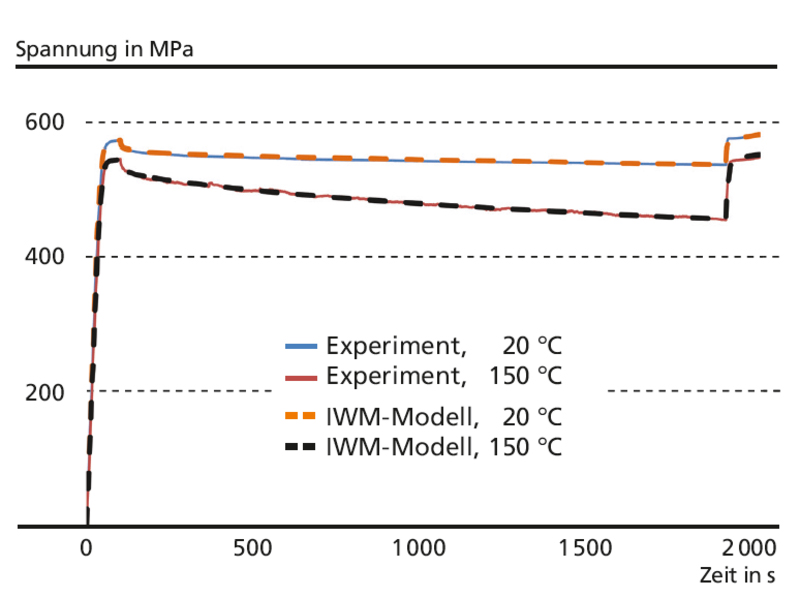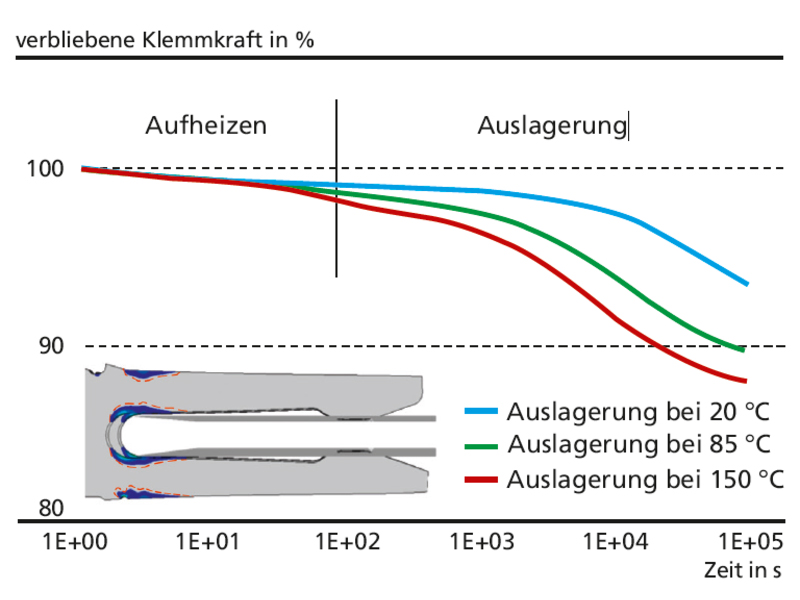Dimensioning connectors and electrical bonds
On the basis of continuum mechanical models and cutting-edge simulation methodologies, we analyze, evaluate and optimize design processes and forming processes for connectors, including tools and manufacturing steps. We identify the physical causes for potential problems in manufacturing processes. The material microstructure can be linked with material properties, enabling us to simulate changes that occur in material properties during the production process. This allows us to support our clients by recommending manufacturing process improvements and preventing and controlling the effects of problems that occur in the design phase.
Award worthy: Innovative modelling approach for efficiently designed copper connectors
Reliable connectors through the simulation of manufacturing processes and operating behavior
- Support for the planning and design of cutting processes and forming processes: crimping, compensation for springback
- Simulations of the complete process chain
- Simulation of operational behavior
- Development and application of cutting-edge material models to describe thermal influences (relaxation), vibration (service life) and electrical properties
- Experimental investigation of relaxation behavior
- Experimental investigation of springback behavior


Rolled copper materials: characterization and simulation of time dependent properties
Due to its outstanding properties of heat and electrical conductivity, copper plays a significant role in technological development. Furthermore, under thermal and mechanical loadings, copper exhibits a very characteristic relaxation behavior which can lead to early component or system failure, but this behavior is currently only considered by rough approximation with static component design. In order to increase copper component reliability through numerical simulation, the relaxation behavior must be considered in the simulation models.
Measuring and modeling Cu stress and relaxation behavior
Accurate measurement of mechanical material properties is of primary importance in order to ensure effective modeling and simulation of stress and relaxation behavior. The characterization and quantification of mechanical material properties can be achieved by means of experimental data. In the next step, model parameters of an extended Chaboche model, developed at the Fraunhofer IWM are identified for different strain rates and temperatures (figure 1).
Component behavior predictions during forming processes and within operation using FE simulation
Using this extended material model, we can predict shape deformations including springback during forming processes for a CuNiSi connector. Different aspects of such simulations can be analyzed, for instance the clamping force at different exposure temperatures with respect to time (figure 2). This allows for predictions of residual clamping force for representative testing cycles in which load and temperatures are defined by the client, as well as for optimizing geometry so as to improve the reliability and functionality of the connectors.
 Fraunhofer Institute for Mechanics of Materials IWM
Fraunhofer Institute for Mechanics of Materials IWM